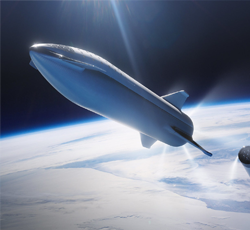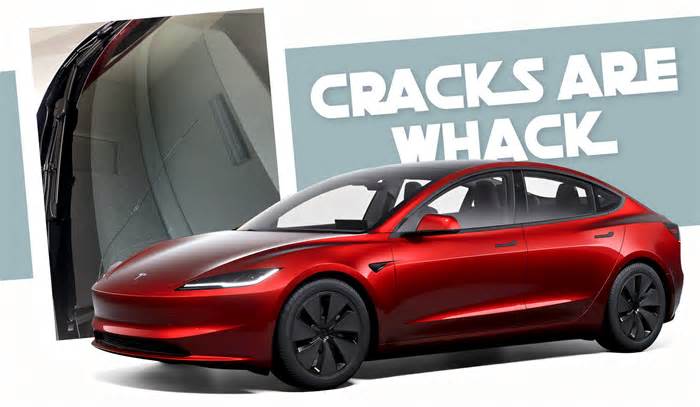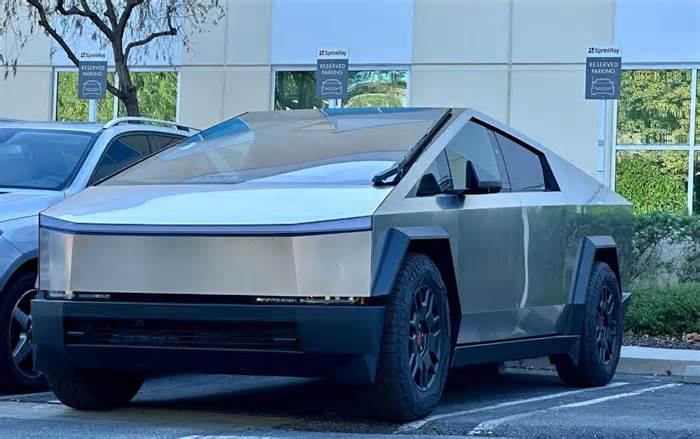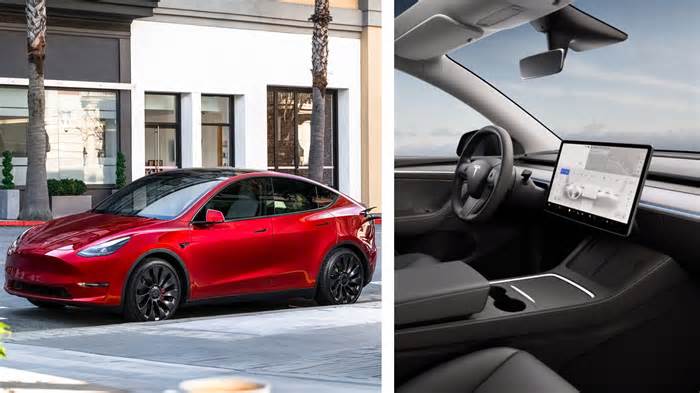
Report: Starlink shines in Europe
- by Advanced Television
- Feb 05, 2025
- 0 Comments
- 0 Likes Flag 0 Of 5

February 5, 2025
While Europe may not represent the largest market for satellite solutions compared to other large landmass regions with lower fibre density and a greater share of the population living in rural areas, low Earth orbit (LEO) constellations have emerged as an important part of the connectivity toolkit in the region.
SpaceX’s Starlink has secured a leading position in the LEO market, both in Europe and globally. With a network of more than 7,000 satellites worldwide, it remains the most capable in terms of coverage and capacity, providing broadband access throughout most of Europe.
As Starlink adoption on the continent has surged, even in unexpected places like London – where network capacity has been exhausted and the service is sold out – SpaceX has moved swiftly to bolster its constellation. The company ramped up investments to increase the density of its ground stations and launched a blitz of new satellites in the latter half of last year.
A report from Ookla explores how SpaceX’s investments are contributing to Starlink’s performance in Europe as the service scales up amid intensifying competition from the rapid expansion of fibre-to-the-home (FTTH) infrastructure across the continent.
Key Takeaways:
Significant improvements in latency translate into better quality of experience (QoE) for Starlink users across Europe. The latency disparity between Starlink and the aggregate terrestrial fixed broadband market has narrowed substantially across Europe over the past two years. In Q4 2024, Starlink users in Western Europe experienced the lowest median latencies on the continent, with the UK (41 ms), Belgium (46 ms) and Luxembourg (46 ms) leading the way. Improvements in latency have boosted Starlink’s QoE performance for video streaming, web browsing and gaming, as evidenced by outcomes such as shorter video start times and reduced game latency.
Starlink’s download speeds are recovering in most countries as SpaceX continues to scale capacity with recent satellite launches. In Q4 2024, most European countries experienced an improvement in Starlink download speeds, likely driven by the continued expansion of the satellite constellation. The sharp increase in operational satellites at the end of October last year appears to have contributed to higher speeds across multiple countries, with some regions seeing particularly notable gains. Southern European countries such as Croatia (~70 per cent) and Greece (~65 per cent) recorded substantial quarter-on-quarter download speed increases between the third and fourth quarters of last year, now ranking among the fastest Starlink connections in Europe.
Starlink adoption is more highly concentrated in countries with lower levels of fibre penetration and a larger proportion of the population living in rural areas. Central and Southern European countries such as Germany, Greece, Italy and Croatia have below-average FTTH coverage compared to the EU average and exhibit higher levels of Starlink adoption, likely due to the LEO solution being relatively more competitive (either on performance or price) in these regions. At the same time, while Starlink continues to provide higher speeds than the aggregate terrestrial fixed broadband market in some countries—including Greece, the Czech Republic, Italy, and Croatia—the number of such markets is steadily decreasing. Significant fibre investments across Europe have improved fixed broadband speeds over the past two years, increasingly challenging Starlink’s competitiveness.
Starlink latency improvements continue at pace across Europe
The physics of transmitting data across vast distances between Earth and space has long challenged satellite operators in their efforts to compete with terrestrial fixed broadband services in Europe on latency. Starlink’s LEO system has been a game-changer, significantly improving latency performance compared to traditional satellite systems that rely on mid-Earth or geostationary orbits.
Over the last two years, SpaceX has been focused on building on this advantage and narrowing the disparity between the performance of its service and what is available from terrestrial fixed operators. To achieve this, it has sought to reduce the distance and number of hops data travels across its network. This has involved massively expanding its satellite constellation over Europe—boosting inter-satellite links for more direct routing—and increasing ground station density to optimise connections to the terrestrial internet.
While the latencies observed in the aggregate fixed broadband market remain materially lower than those of Starlink across Europe, there has been remarkable progress in improving its competitiveness. Speedtest Intelligence data reveals a consistent trend of double-digit declines in median latency across over a dozen European countries between Q4 2023 and Q4 2024.
During the period between Q4 2023 and Q4 2024, countries in Central and Southern Europe recorded significant improvements in Starlink’s median latency performance. Greece saw its median latency decline by 54 per cent, while Switzerland and Austria saw declines of 28 per cent and 27 per cent respectively. These improvements are contributing to Western Europe’s strong overall performance in latency on Starlink connections, with several countries now approaching the 40 ms mark for the first time. The UK led the continent with a median latency of 41ms in Q4 2024, followed by Belgium (46 ms), Luxembourg (46 ms) and Ireland (47 ms).
This rapid pace of improvement in latency comes from a high baseline but is at least twice as fast as the underlying rate of improvement in the aggregate fixed broadband market across most European countries. A notable exception is Spain, where Starlink’s median latency of 54 ms showed only a 4 per cent reduction over the year, matching the modest improvement seen in the rest of the country’s fixed broadband market. This limited improvement may reflect orbit-related factors, as neighboring Portugal also experienced a relatively small 8 per cent reduction in Starlink latency compared to the larger improvements observed in most other European countries.
Across Starlink’s European footprint, latency outcomes continue to vary significantly by country. In Southern Europe, Cyprus (144 ms) and Malta (106 ms) recorded some of the continent’s highest latency in Q4 2024, while Nordic countries like Finland (89 ms) and Norway (79 ms) – despite often leading in Ookla’s terrestrial benchmarks – also lagged behind.
These regional disparities in latency performance highlight the immense technical challenge of delivering uniform service across Europe. Higher-latitude Nordic countries often rely on Starlink’s polar-orbit satellites for coverage in the far north, which can impact performance. Meanwhile, Cyprus and Malta’s higher latency may stem from a limited ground station presence, increasing reliance on inter-satellite links for connectivity.
Shifts in download speeds indicate Starlink is balancing capacity and demand in Europe
Unlike latency, which has seen significant and sustained improvements across most European countries over the past two years in Speedtest Intelligence data, Starlink’s download speed performance has faced growing pressure as the service scaled and network usage increased.
Between Q4 2022 and Q4 2023, Central European countries saw some of the steepest declines in median download speeds. In Germany, speeds fell by 31 per cent – from 94.37 Mbps to 65.44 Mbps – while Switzerland recorded a 24 per cent drop, going from 136.03 Mbps to 103.88 Mbps. Combined with the backdrop of improving median download speeds in terrestrial fixed broadband – driven by accelerating FTTH deployment and adoption – Starlink’s competitiveness on speed eroded over this period in many parts of Europe.
For the first time in Q4 2024, there were signs that the successive speed declines observed in previous quarters may have stabilised, with early indications of a potential recovery. However, given quarter-to-quarter variability, it remains to be seen whether this trend will hold in the coming year.
Nonetheless, the timing of these improvements dovetails with the reported jump in the number of Starlink satellites in service from late October last year, likely reflecting the additional capacity afforded by an expanded constellation above Europe.
While most European countries recorded a material quarter-on-quarter boost in Starlink’s median download speeds in Q4 2024, the most pronounced gains were concentrated in Southern Europe. The significant improvements in countries like Croatia (~70 per cent) and Greece (~65 per cent) have propelled them to be among the top in Europe in terms of median download speed on Starlink, joining other neighbours in nearby countries like Hungary and Romania.
Even the previously mentioned examples, Germany and Switzerland, for the first time in almost two years, saw a quarter-on-quarter speed increase in Q4 2024, rising by 18 per cent and 11 per cent respectively. The overall movements have left countries in Central and Southern Europe trailing in Starlink’s median download speed, with Cyprus (36.52 Mbps) and Malta (53.85 Mbps) ranking similarly as poorly as in latency, but others—most notably the Nordics—performing relatively better on median download speed than latency.
Despite the decrease in the number of countries where Starlink delivers higher median download speeds than the aggregate terrestrial fixed broadband market over time, principally a result of rising FTTH adoption driving improved fixed performance, several countries still stand out.
For example, in Q4 2024, median download speeds on Starlink were faster in Greece, Croatia, Italy, Austria, the Czech Republic and Estonia than the aggregate terrestrial fixed broadband speeds in these markets, all of which feature FTTH coverage below the EU average.
In the many countries where Starlink is not ahead of the rest of the fixed market on download speed performance—which is the majority of European countries—it remains competitive on other related metrics, including consistency, which measures the proportion of Speedtest samples exceeding minimum thresholds of 25 Mbps for download and 3 Mbps for upload.
In the UK, for example, Starlink’s consistency performance remained within the range of the rest of the fixed market over the last year, behind operators like Virgin Media and Vodafone but ahead of TalkTalk and PlusNet. In QoE measures such as Game Score (a 0-100 weighted sum incorporating multiple video performance factors), it has steadily closed the gap with the broader UK fixed market, narrowing from over 5 points in Q4 2023 to less than 3 points in Q4 2024.
This improvement in video QoE on Starlink connections has been observed across many European countries over the past year, driven by reductions in adaptive start time and failure rates—resulting in Starlink users spending less time waiting for videos to load and experiencing fewer playback issues—as well as enjoying an increase in average video bitrate.
Starlink adoption continues to be shaped by regional demographics and the varying availability of high-speed broadband
The relative penetration of Starlink across Europe (based on analysis of share of Speedtest samples) remains highly varied by country and region, shaped largely by demographics and the profile of available fixed broadband technologies in each market. Highly urbanised countries with a small share of the population living in rural areas, such as the Nordics and the Benelux region, exhibit lower levels of Starlink adoption.
Higher-than-average fibre availability and take-up in these countries (corresponding to a larger share of fixed subscriptions providing download speeds of at least 100 Mbps), combined with the performance declines at higher latitudes closer to polar orbits, mean that Starlink may not be a competitive broadband access solution for a large proportion of the population. Other factors, such as high levels of fixed wireless access (FWA) penetration – offering higher performance at lower prices than Starlink – in countries such as Finland may also contribute to dampening the appeal of LEO services there.
Starlink Adoption is Highest in Southeastern Europe, Moderate in Central and Western Europe and Lowest in Fibre-Rich Nordic and Benelux Regions
A corollary is seen in parts of Central and Southern Europe, where Starlink is relatively more competitive as a fixed broadband solution and measured take-up of alternatives like FWA is below the EU average. This is driven by higher Starlink speeds compared to other parts of Europe—particularly in Greece and Croatia—along with the lower-than-average availability of fixed networks offering very high-capacity coverage (as defined by the European Commission for FTTH and DOCSIS 3.1). As a result, Starlink is relatively more competitive in these markets and, in some cases, outperforms terrestrial fixed operators.
The higher proportion of Starlink users in Germany among Europe’s largest economies is likely a consequence of its outdated fixed broadband mix. With some of the lowest FTTH coverage in the EU and higher fixed broadband prices than elsewhere, Starlink adoption may be higher in Germany and present an attractive alternative there despite providing lower speeds than in other parts of the continent.
Notwithstanding these structural patterns, however, not all instances of Starlink adoption fall neatly into line across Europe. As noted earlier with the example of London, some outliers are driven by specific use cases. For instance, London’s relatively high Starlink usage has been partly linked to its utility beyond home broadband and in providing connectivity for events, supporting card terminals and similar applications.
The LEO space race is heating up above Europe
SpaceX’s ambitions for Starlink in Europe extend well beyond traditional broadband. Over the coming year, the company plans to enter the direct-to-device (D2D) market—widely seen as the next frontier in the LEO space race—by connecting unmodified consumer handsets. This effort is being powered by the launch of SpaceX’s Gen2 satellites, of which the company ultimately hopes to deploy tens of thousands.
The company’s success in transforming the economics of large-scale satellite launches has inspired others to make similar moves. Amazon, for example, plans to deploy over a thousand satellites by mid-2026 through its Project Kuiper initiative, which will focus on mid-latitude coverage (lacking the polar-orbits boasted by Starlink). AST SpaceMobile, meanwhile, is targeting the D2D market and already has five satellites in operation. It aims to expand its constellation to more than 240 satellites.
Related posts: Register
We use cookies to ensure that we give you the best experience on our website. If you continue to use this site we will assume that you are happy with it.
Please first to comment
Related Post
Stay Connected
Tweets by elonmuskTo get the latest tweets please make sure you are logged in on X on this browser.
Sponsored
Popular Post
tesla Model 3 Owner Nearly Stung With $1,700 Bill For Windshield Crack After Delivery
33 ViewsDec 28 ,2024
Middle-Aged Dentist Bought a Tesla Cybertruck, Now He Gets All the Attention He Wanted
32 ViewsNov 23 ,2024





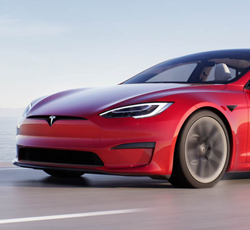
 Energy
Energy